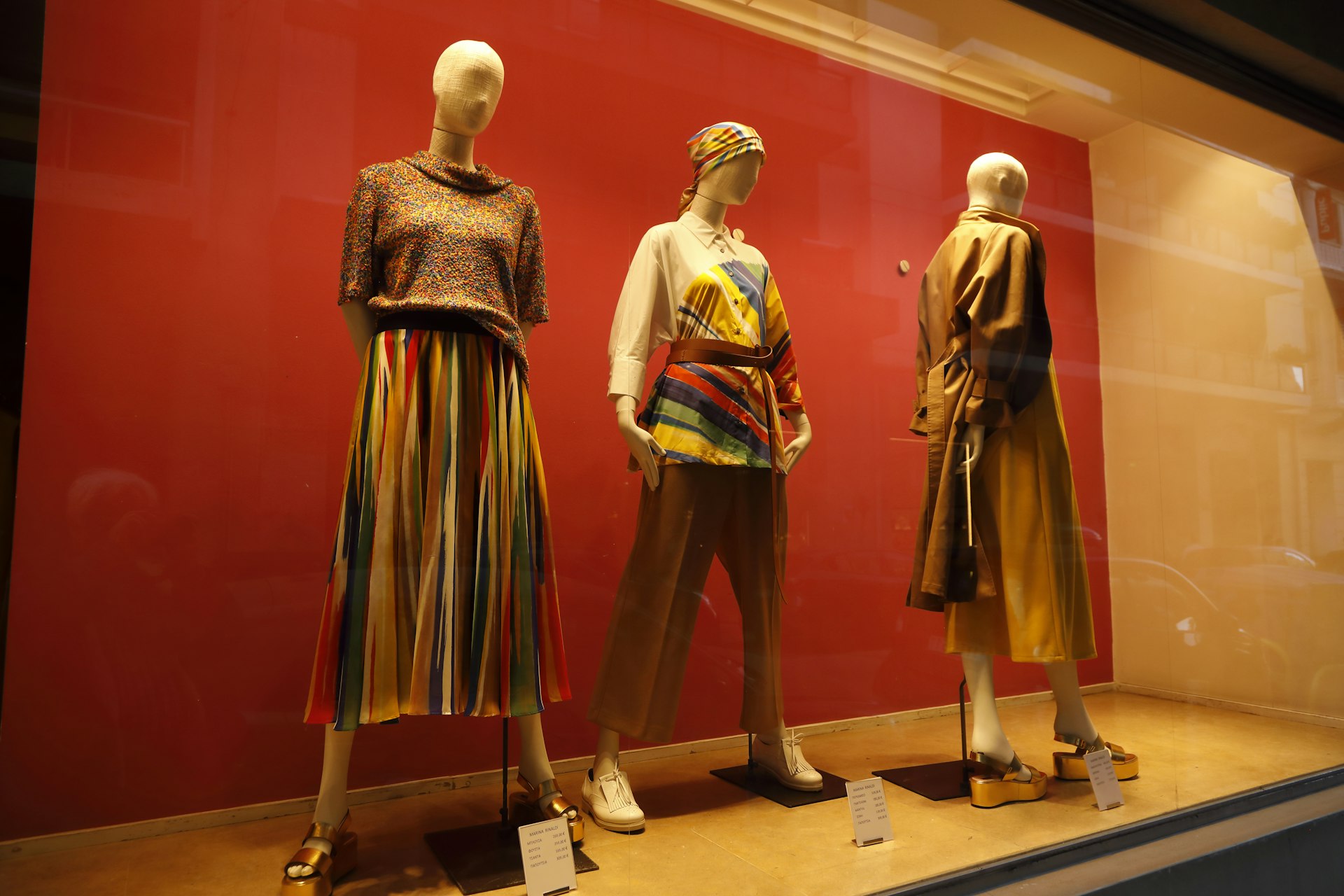Transforming Fashion Retail: How Hyper-Personalized Shopping Experiences Drive Engagement and Loyalty

Photo by Keagan Henman on Unsplash
Introduction: The Rise of Hyper-Personalization in Fashion
Today’s fashion industry is witnessing a seismic shift as consumer expectations soar for shopping experiences tailored to individual tastes, needs, and lifestyles. Hyper-personalized shopping goes beyond traditional segmentation, leveraging advanced AI, data analytics, and digital platforms to deliver highly relevant product recommendations, custom designs, and seamless omnichannel experiences. With 71% of shoppers reporting frustration when experiences feel impersonal, and brands achieving up to 40% more revenue from personalized activities, the stakes for fashion retailers have never been higher [3] .
What Is Hyper-Personalization in Fashion?
Hyper-personalization in fashion is a data-driven approach that analyzes individual customer behaviors, preferences, and real-time interactions to curate recommendations, promotions, and experiences. Unlike basic personalization, which might segment by age or location, hyper-personalization utilizes deep learning algorithms to deliver truly unique journeys for each shopper. This can include AI-powered product suggestions, dynamic pricing, custom styling advice, and interactive virtual fitting rooms [3] [2] .

Photo by Sean Driscoll on Unsplash
Key Benefits for Consumers and Retailers
Hyper-personalized shopping experiences unlock several critical benefits:
- Enhanced Customer Engagement: Relevant recommendations and communications increase time spent on site and interaction rates.
- Higher Conversion Rates: Customers are significantly more likely to purchase products that reflect their personal tastes and needs [3] .
- Increased Loyalty: Personalized experiences foster emotional connections, encouraging repeat purchases and advocacy.
- Optimized Inventory and Marketing: Predictive analytics help retailers manage stock efficiently and deliver targeted promotions.
- Competitive Differentiation: Brands offering unique, tailored experiences stand out in a crowded market.
Real-World Examples of Hyper-Personalized Fashion Experiences
1. AI-Powered Recommendations at Leading Brands
Top brands like Zara , H&M , Nike , and Swarovski have seamlessly integrated AI-driven recommendations, so consumers receive personalized suggestions almost invisibly. These platforms analyze purchase history, browsing behavior, and current trends to surface items most likely to resonate with each shopper [1] .
2. Reebok Impact: Digital Self-Expression
Reebok launched “Reebok Impact” on Instagram, inviting users to upload their favorite photo memories. These are transformed into bespoke digital sneakers, allowing for highly personal, shareable creations. This initiative not only enhances customer experience but also encourages viral engagement and brand affinity [1] .
3. Adore Me’s AM By You: Customized Lingerie
Victoria’s Secret-owned Adore Me offers “AM By You,” enabling users to design their own bralette and panty sets. Customers describe their preferred design, select an art style, and personalize features before purchasing. Feedback highlights the emotional value and future appeal of such deeply personal products [1] .
4. Virtual Fitting Rooms and AI Styling Assistants
Retailers such as YOOX and Thread employ virtual fitting rooms and AI stylists. Thread uses a machine learning algorithm called ‘Thimble’ to deliver weekly emails with curated outfit suggestions based on style, body type, budget, and user feedback. This service combines human expertise and AI-driven personalization for a truly engaging experience [2] [4] .
5. Weather-Based Recommendations by Very
British retailer Very personalizes product suggestions based on local weather. When a shopper logs in, the platform instantly recommends relevant items-rainwear, summer clothes, or accessories-matched to current conditions, demonstrating real-time, context-aware personalization [2] .
6. Exclusive Experiences for High-Spend Customers
Luxury brands like Gucci and Chanel are investing in private boutiques, appointment-only salons, and concierge services for top clients. These hyper-personalized experiences include curated shopping, exclusive events, and high-touch relationship building, setting new standards for luxury retail [5] .
Step-by-Step Guide: Implementing Hyper-Personalization in Your Fashion Business
Step 1: Collect and Analyze Data
Begin by gathering detailed customer data, including purchase history, browsing patterns, interactions, and demographic information. Use analytics platforms and customer relationship management (CRM) tools to organize and analyze this data. Ensure compliance with privacy regulations and communicate transparently about data usage.
Step 2: Leverage AI and Machine Learning
Deploy AI algorithms to identify preferences and predict future behaviors. These systems can automate product recommendations, segment audiences, and personalize marketing messages at scale. Consider partnering with established AI providers or hiring data science talent to build custom solutions [1] [3] .
Step 3: Create Interactive and Customizable Experiences
Integrate tools such as virtual fitting rooms, product configurators, and augmented reality try-ons. Allow customers to design or modify products, as seen in Adore Me’s lingerie and Reebok’s digital sneakers initiatives. Provide options for style, color, fit, and personalization to deepen engagement.
Step 4: Deliver Context-Aware Recommendations
Use real-time data such as location, weather, and time of day to offer timely, relevant suggestions. For example, Very’s weather-based personalization ensures that product offerings match current local conditions, increasing purchase likelihood [2] .
Step 5: Foster Omnichannel Consistency
Ensure that personalized experiences extend across all channels-website, mobile app, physical store, and social media. Synchronize data and recommendations so customers enjoy a seamless journey regardless of platform [3] .
Step 6: Offer Exclusive Services for VIP Customers
Develop invite-only events, private shopping appointments, and tailored gifting programs for your most valuable clients. Luxury brands demonstrate how these high-touch experiences deepen loyalty and drive revenue growth [5] .
Challenges and Solutions
Implementing hyper-personalization presents several challenges:
- Data Privacy: Consumers are wary of how their data is used. Address this by adopting transparent policies, securing data, and allowing users to control their information.
- Technical Complexity: Integrating AI and personalization tools can be resource-intensive. Start with scalable solutions and consider external partnerships if internal expertise is limited.
- Maintaining Authenticity: Over-automation may feel impersonal. Balance AI-driven insights with human touchpoints, such as personal stylists and customer service interactions.
Alternative Approaches and Additional Pathways
If resources or technical expertise are limited, consider:
- Using third-party personalization platforms that integrate with ecommerce systems.
- Piloting personalization features with a segment of your audience before scaling.
- Leveraging social media for interactive, user-driven customizations (e.g., Instagram polls, TikTok challenges).
For smaller retailers, focus on collecting direct feedback and implementing simple personalization (such as curated email recommendations or loyalty perks) to begin building individualized experiences.
How to Access and Implement These Services
To begin your hyper-personalization journey:
- Research AI personalization platforms such as Centric Software, Intelistyle, and Woven Insights. Visit their official websites to explore product demos and case studies.
- Contact vendors directly through their verified contact forms or request consultations to assess fit for your business.
- For luxury concierge services, reach out to brand-specific boutiques or customer service channels, as these offerings may be invite-only or require qualification.
- Engage your audience through social media campaigns and direct user input for co-creation opportunities.
Remember, while many advanced features require enterprise-level investment, scalable solutions and third-party integrations make hyper-personalization accessible to businesses of all sizes. You can start by implementing basic recommendation engines or curated email journeys before expanding into more sophisticated, AI-driven experiences.
References
- [1] Centric Software (2025). How AI Is Driving Hyper-Personalized Shopping Experiences.
- [2] Intelistyle (2021). Fashion Personalisation: Top 12 Examples.
- [3] Woven Insights (2025). Hyper-Personalization in Fashion Retail.
- [4] Wedia Group (2022). 10 examples of hyper-personalized marketing.
- [5] Glossy (2023). Experiences for the 1% are hyper-personalized, curated and private.



